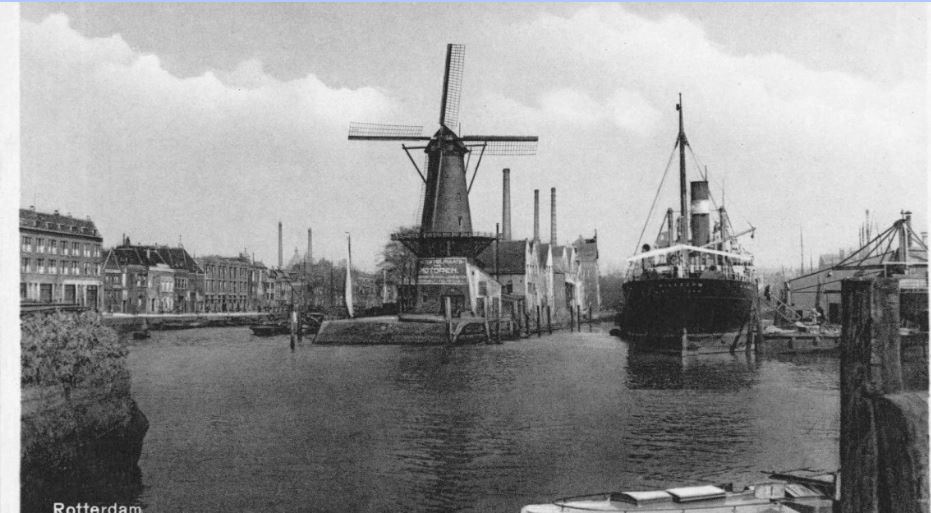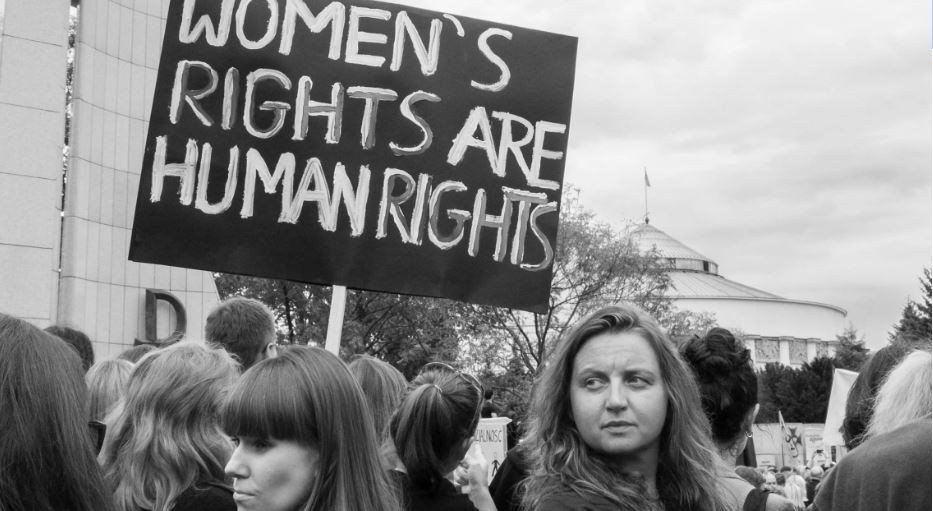The 1930s are the classic period of deglobalisation and protectionism: a trade policy disaster (Irwin 2011). And yet, detailed quantitative studies of interwar trade policy remain relatively scarce. Early studies, based on very aggregate measures such as average tariffs or trade bloc dummy variables, tended to conclude that the impact of protectionism was surprisingly small (Irwin 1998, Eichengreen and Irwin 1995). A recent literature looks in greater detail at the structure of protection and its impact, and identifies a more significant impact of trade policy. Bond et al. (2013) construct a detailed database of US tariffs and find that the average tariff increase after 1930 substantially understates the distortionary impact of the Smoot-Hawley tariff. de Bromhead et al. (2017, 2019) and Arthi et al. (2020) study the impact of commodity-level tariffs in the UK and India, respectively, and find that discriminatory tariff changes after 1930 led to substantial redirection of import demand towards the British Empire and Britain itself, respectively. Betrán and Huberman (2022) find in a detailed analysis that the Spanish Second Republic from 1931 tried to stay open but was confronted with progressively less cooperative trade partners.
In a recent paper (de Zwart et al. 2022), we analyse interwar protection in the Netherlands and its largest colony, the Netherlands East Indies (NEI). As a small open economy, the Netherlands had been one of the main drivers of 19th century European trade liberalisation. Their free trade approach implied a relatively open and non-discriminatory colonial trade policy (van Gelderen 1939, Wirodihardjo 1945). According to the existing literature, even after 1930 both the metropole and colony only implemented protectionist measures hesitantly, unwillingly and in a comparatively mild manner, despite both experiencing exceptionally severe and long Great Depressions, remaining on the gold standard until 1936 (van Zanden and Griffiths 1989, Eichengreen and Irwin 2010). Even when introducing protectionist measures, the Dutch government was rhetorically very careful, arguing, for example, that while protectionism aimed to ‘expand’ domestic production its proposed measures would only serve to ‘maintain’ national production. The existing literature does however acknowledge the imposition of surcharges and tariff increases, arguably for fiscal purposes, as well as import quotas implemented from 1931, and especially from 1933, in both countries.
We need data on tariff and non-tariff measures on a per-product and country basis to answer several key questions: How severe was the increase in protection in the two countries, and what was its sectoral composition? To what extent were tariff increases due to purposeful increases in tariff rates, as opposed to the interaction between specific tariffs and deflation? To what extent was Dutch and Netherlands East Indies protectionism discriminatory? And to what extent was it designed with the interests of the Netherlands, as opposed to those of the Netherlands East Indies, in mind? Regarding the latter question there is considerable disagreement. The Dutch government itself declared in 1936 that Dutch trade policy helped the Netherlands East Indies more than vice versa, and Dutch accounts from the 1950s and 1960s agree that benefits were at least evenly distributed between metropolis and colony. On the other hand, Indonesians have argued that the Netherlands clearly benefitted more from interwar protection, with Netherlands East Indies quotas favouring the Netherlands said to have harmed the Indonesian poor as a result of higher consumer prices (Wirodihardjo 1945).
To address these questions, we use primary sources to gather detailed information on tariffs, quotas, and other trade interventions for a sample of 299 goods in the Netherlands and 226 goods in the Netherlands East Indies from the mid-1920s to 1938. The sample covers 37 three-digit SITC groups, a substantial share of each countries’ imports, and closely tracks the aggregate 1930s trade collapse.
Figure 1 Average tariffs in the Netherlands and Netherlands East Indies, unweighted and weighted by 1928 import value
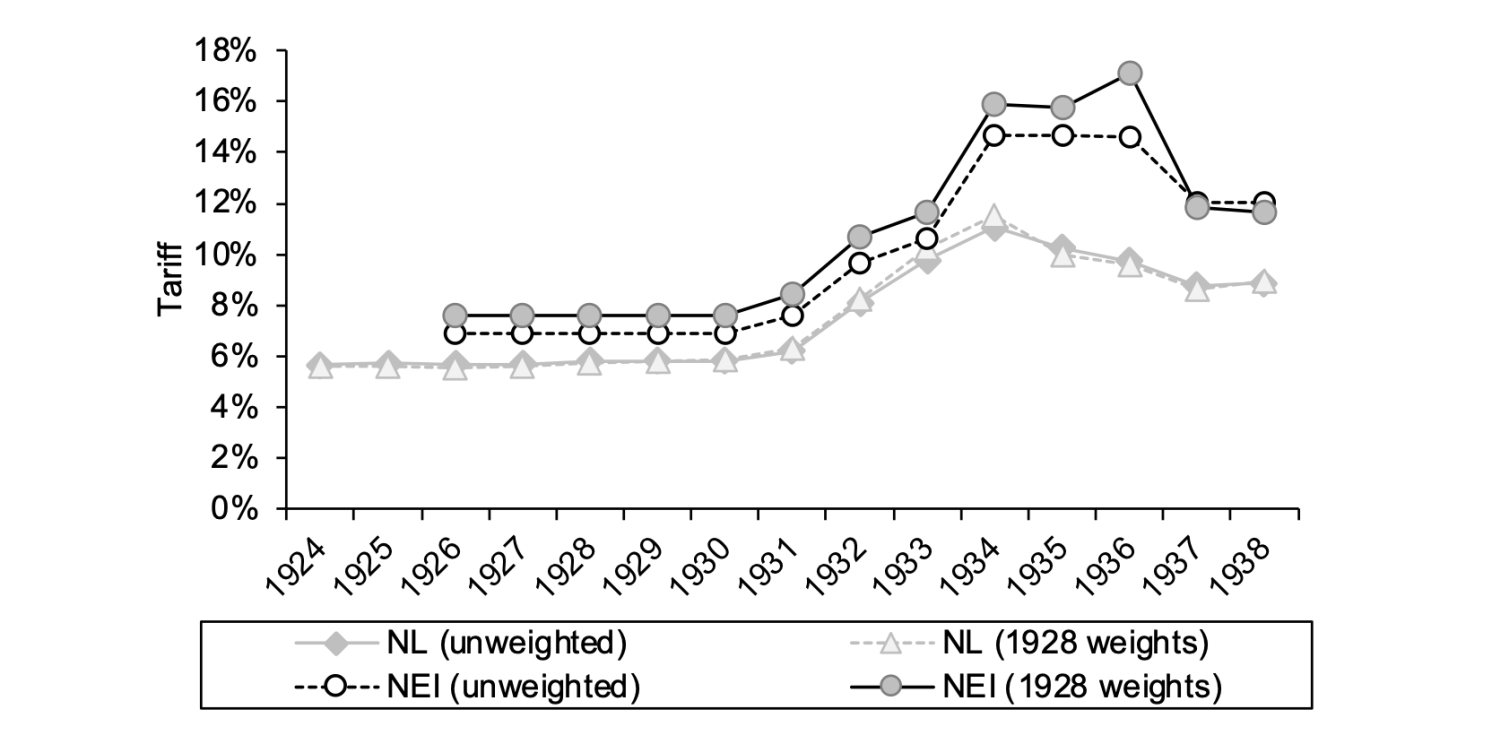
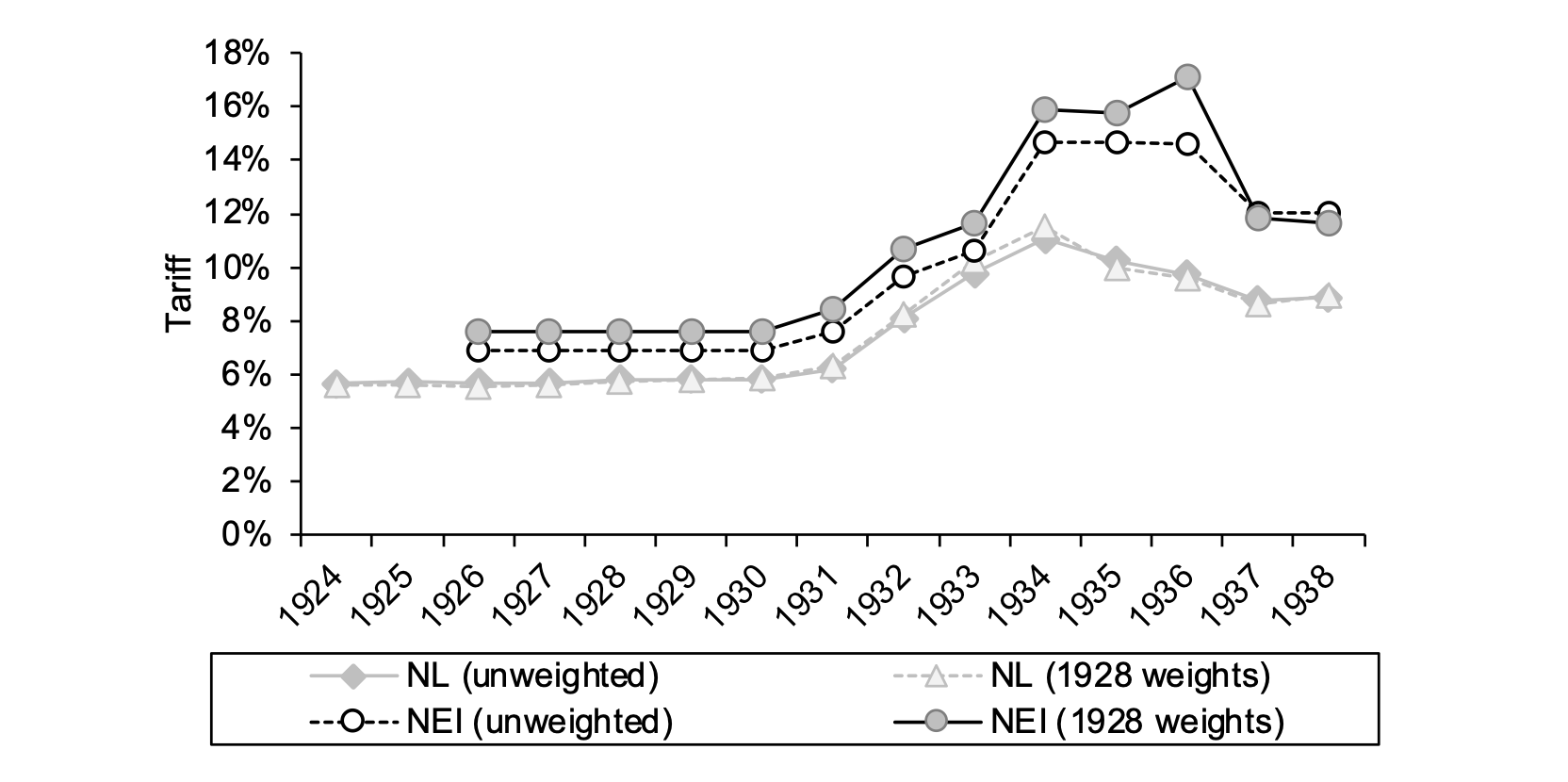
Source: de Zwart et al. (2022, Figure 3).
Four key insights emerge. First, average Dutch tariffs were indeed rather low before 1930 and increased only modestly thereafter. Tariffs in the Netherlands increased from an average of 5.5% throughout most of the 1920s to about 11% in 1936 and then fell again. Netherlands East Indies tariffs increased from around 7%-8% in the 1920s to 17% in 1936. Tariffs in both countries were non-discriminatory, with no imperial preference in either direction. The increases were largely due to temporary surcharges, which were presented as being fiscally motivated by the government. Nevertheless, tariff levels effectively doubled between 1928 and 1936.
Second, deflation was very substantial in the Great Depression. While specific tariffs applied to less than 10% of goods, falling prices for the goods concerned accounted for about half of the rise in Dutch ad valorem equivalent tariffs between 1928 and 1936. They also drove much, if not all, of the increased cross-product variation in tariffs after 1930. For the Netherlands East Indies, where the incidence of specific tariffs was even lower, only 11% of the average ad valorem tariff increase was due to deflation, although for the goods facing specific tariffs the incidence of falling prices was large (Figure 2).
Figure 2 Ad valorem and specific tariffs
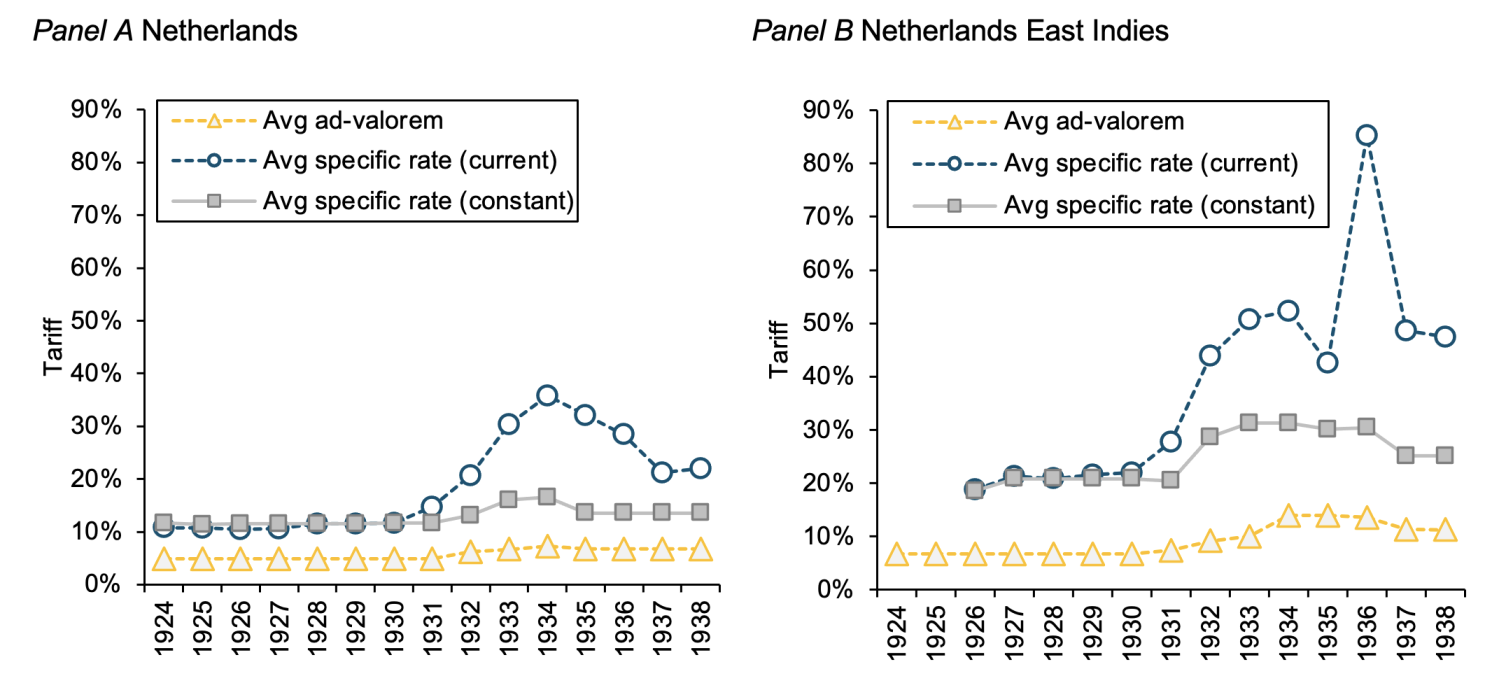

Source: de Zwart et al. (2022, Figure 4).
Note: “Avg ad valorem” refers to the average of tariff rates that were defined in ad valorem terms; “avg specific rate (current) and (constant)” show the average ad valorem equivalent rate of all specific tariffs using current and constant (1928) prices, respectively. Note that for the Netherlands East Indies we lack unit values to calculate ad valorem equivalents of specific tariffs before 1926.
Third, the use of import quotas was much more extensive than previously noted in the literature, especially when weighted by 1928 import value. Furthermore, from 1934 quotas became increasingly country-specific, and thus potentially discriminatory. At the peak in 1936, 23% of all products, representing 28% of total imports, faced quotas in the Netherlands, and country-specific quotas dominated. Furthermore, in the Netherlands import monopolies managed by official ‘Crisis Organizations’ were established. In the Netherlands East Indies, only a very small share of all products was subject to import quotas, but they accounted for no less than 36% of the total value of imports in our sample, since textiles, which represented a very substantial share of all imports, were affected. Roughly three-quarters of Netherlands East Indies quotas were country-specific.
Figure 3 Shares of imports in the Netherlands East Indies from the Netherlands and Japan for textiles with country-specific quotas, general quotas, and without quotas, 1928-1938
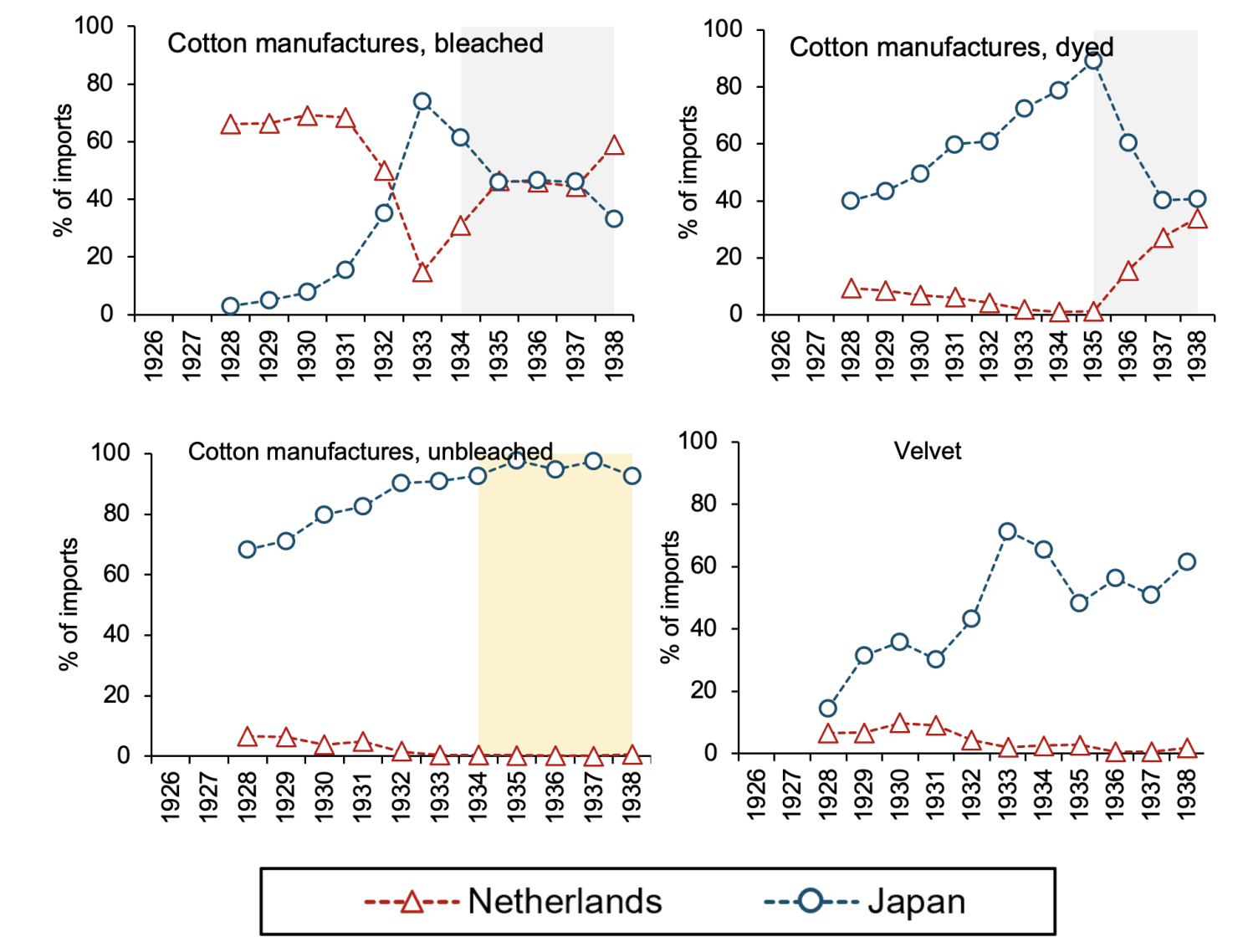
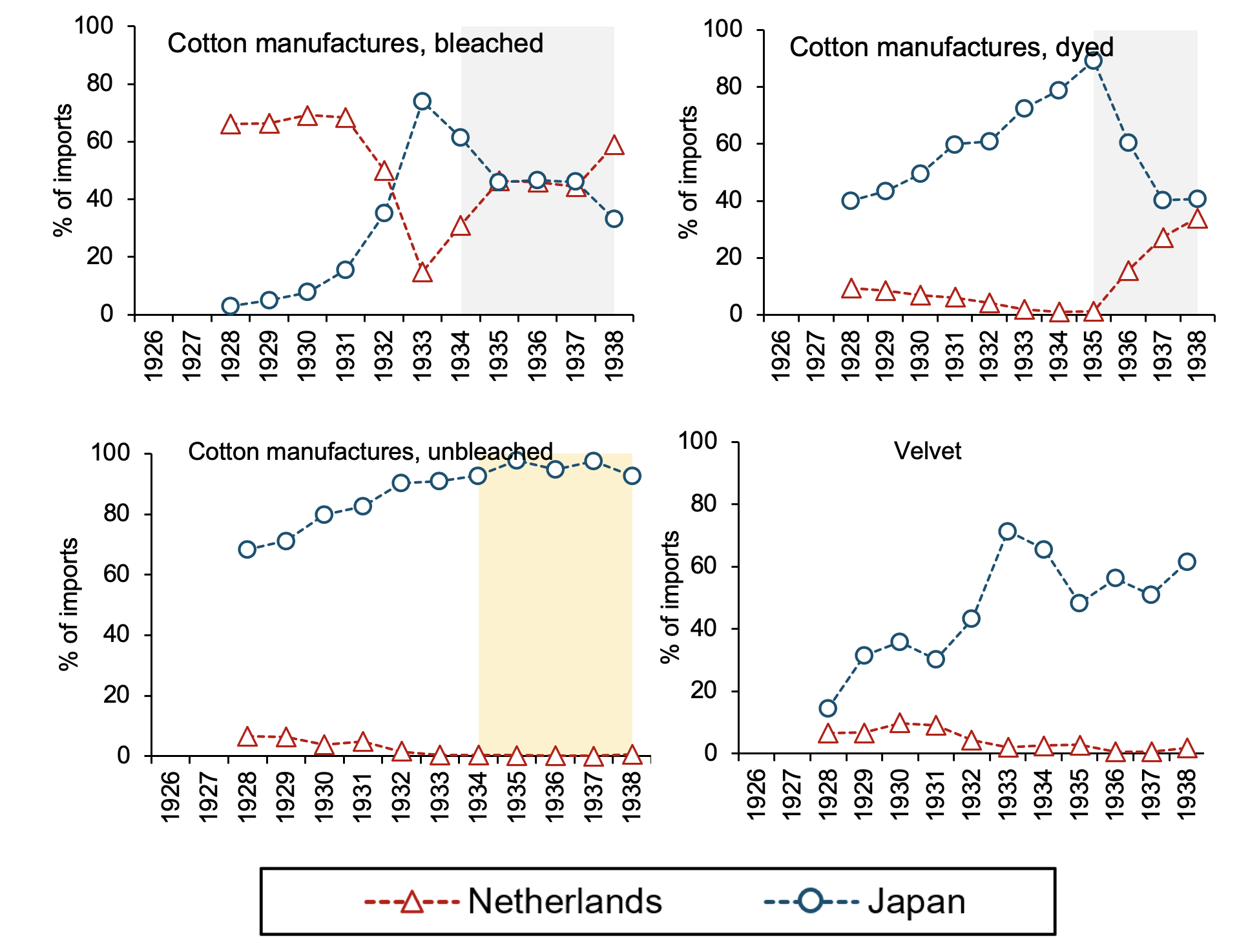
Source: de Zwart et al. (2022, Figures 7, 8, 9).
Note: Shaded areas indicate application of country-specific (grey) and general (orange) quotas.
Fourth, country-specific quotas implied imperial preference, but in a highly one-sided way. Dutch industry, especially textiles, benefitted from the quota system in the East Indies, which was largely geared to create a market for Dutch manufactures. While general quotas enabled continued imports of low-cost textiles from Japan, more expensive textile imports faced country-specific quotas highly favourable to the Netherlands. The import data in Figure 3 suggest that the preferential purpose of these quotas was achieved: textile categories with country quotas (e.g. bleached and dyed cottons) saw a sharp rise in the Dutch share of imports and an equally significant decline in the Japanese share in the East Indies. Similar trends are completely absent from goods facing general quotas (e.g. unbleached cottons) or no quotas at all (velvet). The metropole thus benefitted from the Netherlands East Indies quota system, but it turns out that the reverse was not the case. Only a few Netherlands East Indies goods obtained country-specific quotas in the Netherlands. The Netherlands did implement some additional measures stimulating imports of such Netherlands East Indies goods as rice, maize, sugar, palm oil, and copra, but these were minor in comparison. The evidence thus favours the Indonesian view at the time, according to which Dutch trade policies benefited the metropole rather than its largest colony (Wirodihardjo 1945).
Source :- CEPR



